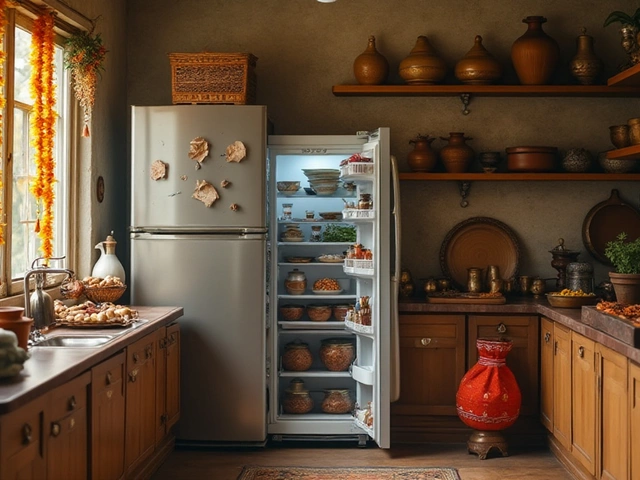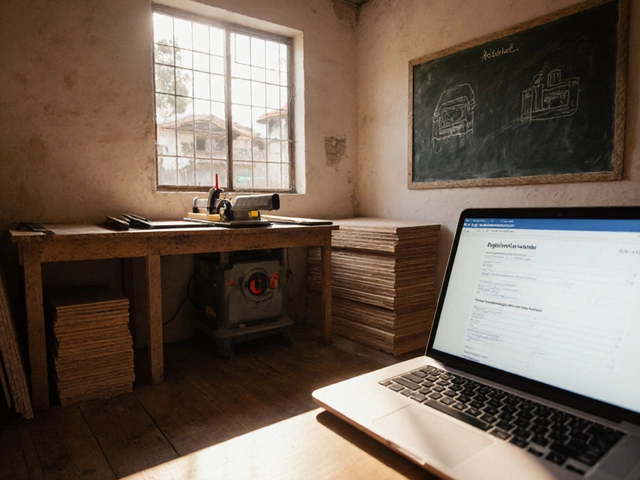
You’d be surprised—some of the most profitable manufacturing businesses today barely need fancy equipment or a big team. What actually makes the most money? It’s all about picking stuff people use every day, that doesn’t spoil, and that you can produce faster than you can spend time overthinking.
Things like custom candles, natural soaps, or eco-friendly packaging are gold mines for a reason: low material cost, simple process, and constant demand. A guy in Texas turned handmade pet treats into a six-figure business, starting in his kitchen. That’s not luck—that’s smart manufacturing. The trick is to spot gaps in your local market before everyone else catches on.
If you’re itching to get started, don’t waste time on big investments until you’ve found proof that your product actually sells. Tiny test runs and sample batches keep costs down. Start small and quick—you’ll see what sticks, and what flops, without betting your savings.
- How the Money Really Moves in Small Scale Manufacturing
- Top High-Profit Manufacturing Ideas
- Smart Ways to Boost Margins
- Common Pitfalls (And How to Avoid Them)
- Tips to Start with Minimal Risk
How the Money Really Moves in Small Scale Manufacturing
If you think big money only comes from huge factories, think again. Small scale manufacturing is often where the best margins hide, especially when big companies can’t serve super specific customer needs. Here’s how the cash flow works for the little guys.
When you keep things small, overhead stays low. Rent might just be your garage. Labor? One or two people, maybe just you and a family member. For stuff like custom candles, a batch can cost $1 each to make but sell for $12 apiece at local markets or online. That’s serious markup you won’t see with mass-market, razor-thin margins.
Direct-to-consumer selling powers things up, too. Online storefronts and social media let you skip the middleman and pocket the retail price. Many profitable manufacturing ideas start with a few product photos, a decent story, and an Instagram page before any real business plan is written.
The trick is owning your niche. If you make, say, funky plant pots or eco-friendly soap, you’re not trying to outdo Amazon—you’re just serving a local crowd or a passionate corner of the web that wants exactly what you offer. Instead of racing to the bottom, you’re charging premium prices for something special.
| Product | Typical Cost to Make | Average Selling Price | Profit Margin |
|---|---|---|---|
| Handmade Soap | $1.50/bar | $6/bar | 75% |
| Soy Candles | $2.25 | $15 | 85% |
| Plant Pots | $3.00 | $20 | 85% |
| Pet Treats | $0.50/oz | $5/oz | 90% |
That’s why the smartest folks in small scale manufacturing focus on stuff that’s quick to make, hard to find in stores, and a bit of a treat for the buyer—something that feels special, even if it’s simple. All of this adds up to real money, with less risk and more control than trying to go big too soon.
Top High-Profit Manufacturing Ideas
If you're aiming to launch a small scale manufacturing venture that actually puts cash in your pocket, the product choice can make or break you. We're talking stuff with steady demand and juicy margins, not trends that fizzle out in six months.
Here's what’s really earning in 2025—none of these require crazy investment or a giant warehouse:
- Custom candles. Scented, decorative, or personalized—the supply costs are low and you can sell each one for way more than your material cost. Big on Etsy and local makers’ markets.
- Plant-based soaps and skincare. Natural bath products are exploding. Folks trust homemade, especially if you use organic or local ingredients. Tiny batches, big markups.
- Eco-friendly packaging. A lot of small brands are ditching plastic and looking for compostable or recycled stuff. You don’t need a factory—just the right molds and materials. Short runs are totally doable.
- Homemade snack foods. Protein bars, nut mixes, or pet treats—keep it clean and niche (think allergy-friendly or keto). For example, the specialty snack market jumped over 8% in the past year, and customers love supporting local makers.
- 3D printed tools and gadgets. It sounds fancy, but a basic desktop 3D printer now costs under $400. Custom adapters, props, or smart home parts get snapped up online—just do your R&D on what people actually need.
To give you a better feel, here’s how the costs and returns can shake out for some of these:
| Product | Avg. Material Cost (per unit) | Typical Sale Price (per unit) | Gross Margin |
|---|---|---|---|
| Custom Candle | $3 | $15 | 80% |
| Plant Soap Bar | $1.20 | $7 | 83% |
| Pet Treat Bag | $2.50 | $10 | 75% |
| 3D Printed Small Part | $1.50 | $8 | 81% |
It’s amazing how even the simplest manufacturing business ideas can stack up that much margin when you find the right crowd. The most successful starters usually test products at local fairs or through friends, tweak based on feedback, then double down on what flies off the shelves. You don’t need dozens of products—pick one that works, focus, and scale up as orders roll in.

Smart Ways to Boost Margins
If you want to make big bucks in small scale manufacturing, you need to squeeze every extra dollar out of each product. The name of the game is high margin, low waste. Here’s what actually works for real makers in 2025.
First, buy your main materials in bulk, even if you’re working out of a tiny garage. Pool orders with other folks if you have to. Most suppliers drop prices by 15-30% once you cross a minimum order threshold. For example, buying soy wax by the case, instead of the pound, saves custom candle makers hundreds per month.
Second, trim any step that slows you down but doesn’t add value. If you’re wrapping soap bars in hand-tied string, but nobody cares, just use pre-cut paper bands. Look at your whole process and ask, “Can I do this faster or cheaper without lowering quality?”
- Automate repetitive steps with tools, like a label applicator or a small batching mixer. These can pay for themselves in weeks.
- Outsource anything that eats up time but doesn’t need your special touch—shipping, printing, even social media responses.
- Use digital designs (think logos, labels) to avoid paying pro designers for minor tweaks each time. Canva and Photoshop subscriptions cost less than one custom design project.
If you’re selling custom products, use smart pricing. A quick way: aim for at least 4x your direct material cost as a selling price. Homemade bath bombs costing $0.80 to make should sell for $3.50 or more. Don’t fall for the trap of underpricing because it “feels fair”—people pay more for things with a personal touch, unique ingredients, or eco-friendly promise.
Check this example snapshot showing just how much price difference bulk buying can make:
| Material | Small Batch ($/unit) | Bulk ($/unit) |
|---|---|---|
| Soap Base (per lb) | $3.50 | $2.10 |
| Soy Wax (per lb) | $4.00 | $2.50 |
| Essential Oil (per oz) | $10.00 | $6.30 |
Finally, always track which products move fast and which just collect dust. Focus on your top sellers and ditch the slow ones. It’s tempting to try a hundred things, but the folks making serious money from profitable manufacturing ideas pick a core group and sell out every single week. Do that, and watch your margins fatten up quick.
Common Pitfalls (And How to Avoid Them)
Jumping into small scale manufacturing is exciting, but there are a few classic mistakes that make newcomers lose money fast. Let’s break down what really goes wrong and how to dodge it—so your business has legs, not holes.
- Underpricing kills profit: Many people price their products too low thinking that’s how to win customers. It usually backfires. You end up covering costs, but not making a dime. Always factor in material, labor, and your own time—then check the competition. A study by CB Insights found that 18% of small businesses fail due to pricing mistakes.
- Ignoring quality for cheap speed: Trying to save time or money by cutting corners hits reputation hard. One batch of sloppy manufacturing takes longer to fix than just doing it right from the start. The best small companies win on quality and clear, honest marketing.
- Over-ordering materials: It’s tempting to buy in bulk. But you’re spending cash you may never get back if the product doesn’t sell. Stick to small orders early on until sales are steady. Leftover inventory is like money in a freezer—useless.
- Poor marketing focus: This one’s sneaky. It’s not enough to make a great product. No one buys what they can’t find. Simple things like clear product photos, a basic website, and listing on Etsy or local Facebook groups matter. Don’t drag your feet on this part.
As Eli Goldratt, business management thinker, said in
“Any improvement not made at the constraint is an illusion.”Focus your efforts where the biggest problems actually sit—don’t waste energy fixing what isn’t broken.
One more thing: Watch for online scams when ordering materials, especially from unknown suppliers. BetterManufacturing did a 2024 survey: 23% of new makers said they lost money to shady websites in their first year. Use suppliers with real reviews or personal recommendations—don’t gamble.
| Common Pitfall | Quick Fix |
|---|---|
| Underpricing | Include all costs, and check competitors |
| Too much inventory | Order small at first |
| Ignoring marketing | Post online, use real photos |
| Poor supplier choice | Use trusted, reviewed sources |
Watch out for these traps, and you’ll have a much better shot at making your manufacturing business not just profitable, but steady.

Tips to Start with Minimal Risk
Starting small scale manufacturing doesn’t have to drain your wallet or leave you with a garage full of unsold inventory. The smartest moves are simple: keep up-front costs low, make only what you need, and listen to early customer feedback.
Here’s what actually works if you want minimal risk and real profits:
- Test products in micro-batches — Don’t launch with 10,000 units. Make a handful first and see if anyone buys. This cuts down waste and tells you right away if your idea has legs.
- Stick to lean tools — No need for top-of-the-line machines. Start with basic gear or even hand tools. Upgrade only when orders pour in. For example, many homemade soap or candle makers use kitchen equipment at first.
- Sell directly on digital marketplaces — Platforms like Etsy, eBay, or even Instagram let you skip store rent and keep marketing cost dirt cheap. Lots of small manufacturing business owners hit their first $1,000 just through these sites.
- Source supplies locally — Small local suppliers often have no minimum order limits. That means less money tied up in materials. Sometimes, you can even negotiate prices or get trial samples.
- Offer custom or limited products — Customers are willing to pay more for something unique. Custom candles, personalized packaging, or specialty food items bring in higher margins with less batch risk.
Check out how much you can save with a lean approach:
| Traditional Setup Cost | Lean Setup Cost |
|---|---|
| Commercial Equipment: $5,000+ | Basic Tools: $300-$600 |
| Bulk Inventory: $2,000+ | Mini Lot: $200-$400 |
| Storefront Rent: $1,000/month | Online Store: $30/month or free |
Staying small lets you adapt faster, dodge big losses, and spot those surprise best sellers. Chasing the next hot item? Stay nimble, ask for feedback constantly, and only scale up when you’re sure you’re onto something with high profit potential. That’s how you go from zero to hero in small scale manufacturing—one safe step at a time.




